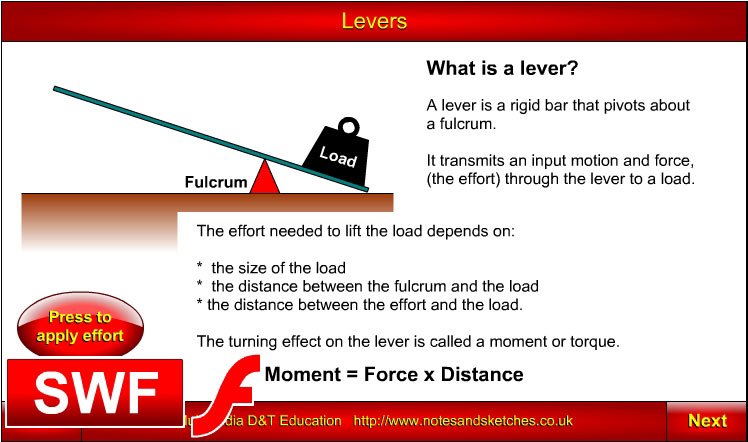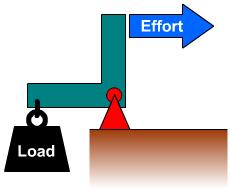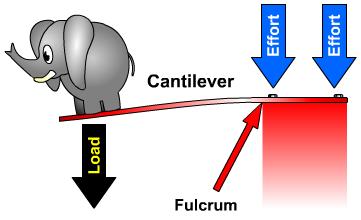 |
||||||||||||
Click on the screenshot above to view the "Levers" animation by Laszlo Lipot |
||||||||||||
|
||||||||||||
What is a lever?A lever is a rigid bar that pivots about a fulcrum. It transmits an input motion and force, (the effort) through the lever pivoting on a fulcrum to a resistance force called a load. LoadThe load is anything that is being moved by a lever. Effort forceThe effort force is the energy applied to a lever to move a load. FulcrumThe fulcrum is the point at which the lever pivots. A lever may rest on a fulcrum or it may swivel on an axle, e.g. a see-saw (class 1 lever) and a wheel barrow (class 2 lever). Classes of leverThere are three classes of levers. Each class of lever has the load and effort force in specific positions relative to the fulcrum.
Class 1 leverA Class 1 lever has the fulcrum between the load and the effort force. Class 2 leverA Class 2 lever has the load between the fulcrum and the effort force. Class 3 leverA Class 3 has the effort force between the load and the fulcrum.
|
||||||||||||
Mechanical advantage (MA)Machines and mechanical devices are used to create a mechanical advantage. Mechanical advantage helps us do work such as move heavy loads for a relatively small amount of effort. Mechanical advantage may be worked out by dividing the load force by the effort force,
Creating a mechanical advantage using a leverLevers create a mechanical advantage. The long lever pivoted near one end enables a small effort force to lift a heavy load.
This type of mechanical advantage is called distance mechanical advantage. The mechanical advantage of a lever is worked out by dividing the distance of the effort force to the fulcrum by the distance of the load force to the fulcrum.
|
||||||||||||





